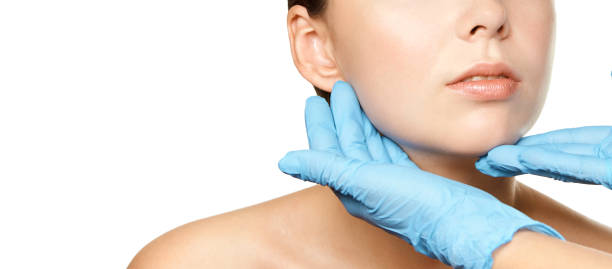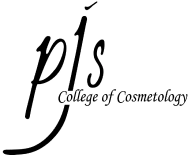August 21, 2025
Medical Esthetics vs Traditional Esthetics: Career Paths, Salary, and Training Requirements

Medical Esthetics vs Traditional Esthetics: Complete Career Comparison Guide
The esthetics industry offers two distinct career paths: traditional esthetics and medical esthetics. While both focus on skincare, these fields differ significantly in training requirements, work environments, services offered, and earning potential. This comprehensive guide explores both career paths to help you make an informed decision about your esthetics career.
What is Traditional Esthetics?
Traditional esthetics, also called spa esthetics, focuses on relaxation-based skincare treatments in spa and salon environments. Traditional estheticians provide services that improve skin appearance and promote wellness through non-invasive treatments.
Common Traditional Esthetics Services:
- Classic European facials
- Microdermabrasion treatments
- Chemical peels (light to medium depth)
- Facial extractions and deep cleansing
- Anti-aging facial treatments
- Makeup application and lessons
- Hair removal (waxing, threading)
- Eyebrow and eyelash treatments
- Body treatments and wraps
What is Medical Esthetics?
Medical esthetics combines skincare with medical science, performed under physician supervision in medical settings. Medical estheticians work with dermatologists, plastic surgeons, and other healthcare providers to address serious skin conditions and provide advanced anti-aging treatments.
Common Medical Esthetics Services:
- Advanced chemical peels (deep peels)
- Laser hair removal assistance
- IPL (Intense Pulsed Light) treatments
- Microneedling procedures
- Pre and post-surgical skincare
- Treatment of acne, rosacea, and hyperpigmentation
- Scar treatment protocols
- Advanced anti-aging procedures
- Medical-grade skincare consultations
Education and Training Requirements
Traditional Esthetics Training:
- Duration: Typically 600-1,500 hours depending on state requirements
- Curriculum: Basic anatomy, product chemistry, facial techniques, hair removal, sanitation
- Clinical Hours: Practice on real clients in school clinic settings
- Licensing: State esthetician license required
- Cost: Generally $3,000-$15,000 for complete program
Medical Esthetics Training:
- Prerequisites: Must first obtain traditional esthetics license
- Additional Training: 40-600+ hours of specialized medical training
- Advanced Curriculum: Medical terminology, advanced anatomy, laser safety, pharmaceutical knowledge
- Certifications: Manufacturer certifications for specific equipment and procedures
- Ongoing Education: Continuous training required for new technologies and techniques
- Total Investment: $5,000-$25,000+ including initial esthetics education and medical training
Work Environment Differences
Traditional Esthetics Work Settings:
- Day spas and resort spas
- Standalone esthetics practices
- Salons offering spa services
- Wellness centers
- Cruise ships and destination spas
- Retail environments (department stores, beauty retailers)
Medical Esthetics Work Settings:
- Dermatology clinics
- Plastic surgery practices
- Medical spas (med spas)
- Laser treatment centers
- Oncology centers (post-cancer skincare)
- Anti-aging clinics
- Cosmetic surgery centers
Salary and Earning Potential
Traditional Esthetician Salaries:
- Entry Level: $25,000-$35,000 annually
- Experienced: $35,000-$50,000 annually
- Top Performers: $50,000-$75,000+ annually
- Commission Structure: Typically 40-60% of service revenue plus tips
- Variables: Location, clientele, additional services (retail sales, upselling)
Medical Esthetician Salaries:
- Entry Level: $35,000-$45,000 annually
- Experienced: $45,000-$65,000 annually
- Senior Level: $65,000-$85,000+ annually
- Benefits: Often includes health insurance, paid time off, retirement benefits
- Growth Potential: Management positions, training roles, practice ownership opportunities
Career Advancement Opportunities
Traditional Esthetics Advancement:
- Spa management positions
- Training and education roles
- Product line development
- Independent practice ownership
- Specialized services (lymphatic drainage, oncology esthetics)
- Platform artistry and education
Medical Esthetics Advancement:
- Lead esthetician positions
- Treatment coordinator roles
- Practice management opportunities
- Medical device training positions
- Clinic ownership (in some states)
- Specialized medical certifications
Pros and Cons Comparison
Traditional Esthetics Advantages:
- Lower initial education investment
- Flexible work environments
- Creative service menu options
- Less stringent regulations
- Relaxed, spa-like work atmosphere
- Diverse client interactions
Traditional Esthetics Challenges:
- Lower average earning potential
- Higher client turnover
- Seasonal business fluctuations
- Limited insurance coverage for services
- Physical demands of spa environment
Medical Esthetics Advantages:
- Higher earning potential
- Better benefits and job security
- Advanced technology and procedures
- Insurance coverage for some services
- Professional medical environment
- Continuous learning opportunities
Medical Esthetics Challenges:
- Higher education and certification costs
- More stringent regulations and oversight
- Requirement for physician supervision
- Limited geographic opportunities
- Higher stress medical environment
- Extensive continuing education requirements
Choosing the Right Path
Consider Traditional Esthetics If You:
- Enjoy relaxing, spa-like environments
- Want to focus on wellness and relaxation
- Prefer diverse, creative treatment options
- Want faster entry into the workforce
- Enjoy flexible scheduling options
- Like building long-term client relationships
Consider Medical Esthetics If You:
- Are interested in advanced skincare science
- Want higher earning potential
- Enjoy working in professional medical settings
- Are willing to invest in extensive ongoing education
- Like helping clients with serious skin conditions
- Want comprehensive employee benefits
Market Demand and Job Outlook
Both traditional and medical esthetics show strong growth projections:
Traditional Esthetics Growth:
- 17% job growth projected through 2031 (much faster than average)
- Driven by increased focus on wellness and self-care
- Growing spa industry and wellness tourism
- Expansion of esthetics services in salons
Medical Esthetics Growth:
- 22% job growth projected through 2031
- Aging population seeking advanced anti-aging treatments
- Increased acceptance of non-surgical procedures
- Technology advances creating new treatment options
- Growing medical spa industry
Getting Started in Your Chosen Field
For Traditional Esthetics:
- Research state licensing requirements
- Choose an accredited esthetics program
- Complete required education and clinical hours
- Pass state board examinations
- Begin building your client base and skills
For Medical Esthetics:
- Complete traditional esthetics education and licensing
- Gain experience in traditional settings
- Research medical esthetics opportunities in your area
- Pursue additional medical training and certifications
- Apply for positions in medical settings
The PJ’s Advantage
At PJ’s College of Cosmetology, our comprehensive esthetics program provides the strong foundation needed for either career path. Our curriculum covers essential skincare science, hands-on clinical experience, and business principles that prepare graduates for immediate success in traditional esthetics or further advancement into medical esthetics.
Our experienced instructors help students understand both career paths and make informed decisions about their professional goals. With hands-on training in our student clinics, graduates develop the confidence and skills needed to excel in their chosen esthetics specialty.
